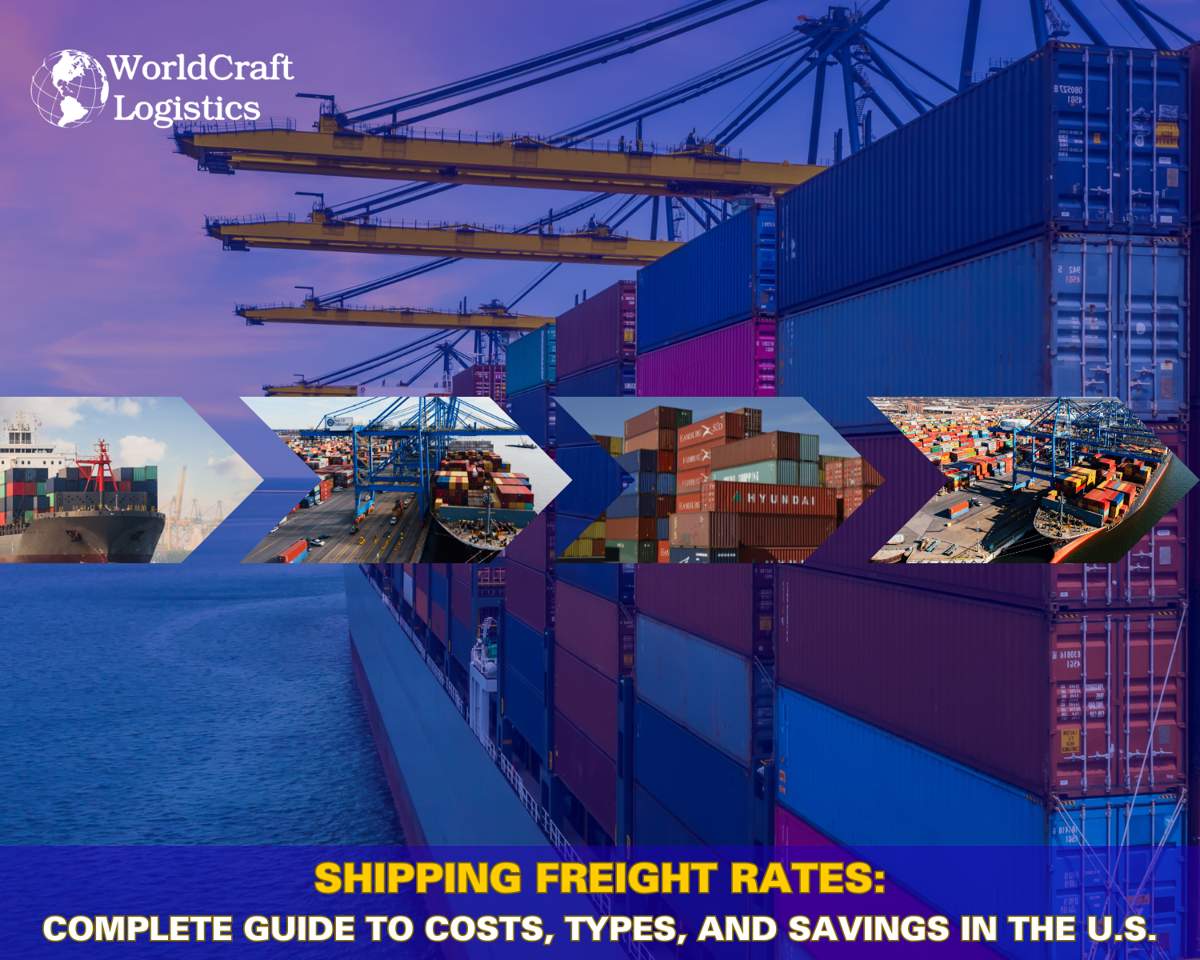
Starting June 1st, 2023 Our warehouse fee will be $0.65/cubic foot per month
In effort to lower the warehouse storage fee during inflation, we have went narrow aisle racking.This construction took us four months but the project is finally completed. With narrow aisle racking, we are able to drop storage by 24%.We as partners will go through this inflation together.
03/11/2024
In the realm of commerce, stagnant inventory, commonly known as dead stock, poses a substantial challenge. This phenomenon occurs when goods fail to find buyers, languishing untouched on warehouse shelves. The absence of efficient inventory management software exacerbates this issue, allowing dead stock to persist in obscurity, devoid of utility.
The financial ramifications of dead stock are palpable, imposing a monetary burden on businesses unable to recover costs associated with unsold merchandise—whether self-manufactured or procured from external sources.

In business parlance, dead stock, also labeled as obsolete inventory, encompasses goods that have never transitioned from storage to consumer possession. Typically, these items defy return to suppliers due to obsolescence, seasonality, or an absence of market demand.
Consider the scenario of a clothing retailer clutching onto winter coats post the conclusion of the winter season, while consumer preferences pivot towards spring attire. In this context, those unsold winter coats metamorphose into the epitome of dead stock, representing a financial setback for the business.
Please see other terms:
👉 Dock to stock meaning and 10 ideas to improve effective DTS processes
👉 What is consignment inventory? Benefits and effective ways
👉 What is Bulk Cargo? Discover the Essentials of Bulk Cargo Shipping
To sidestep this issue, it is crucial to comprehend the root causes behind its buildup. By identifying the factors contributing to the accumulation of dead stock, one can enhance the ability to swiftly clear it out and avert future stockpiling. Herein lie some of the prevalent factors responsible for the existence of dead stock.

Procuring surplus inventory without a comprehensive grasp of projected sales within a specific timeframe is the swiftest route to amassing stagnant stockpiles and escalating carrying expenditures.
Determining the optimal stock volume required to meet forthcoming orders presents a formidable challenge. Striking a delicate balance in maintaining surplus stock becomes achievable through the meticulous implementation of an inventory control system and vigilant monitoring of pivotal distribution metrics, such as the inventory turnover ratio. This strategic approach facilitates more informed decisions regarding inventory replenishment, the judicious determination of an appropriate order quantity, and the timing of procurement.
An alternative method for retail enterprises to avert the pitfall of excessive ordering entails acquiring smaller quantities of stock on a more frequent basis. For instance, mitigating the risk of accumulating dormant inventory can be achieved by procuring stock aligned with a monthly demand forecast, as opposed to a yearly projection.
In the realm of e-commerce, the inadvertent misjudgment of forthcoming demand arises from a failure to monitor the requisite data. This oversight leaves e-commerce enterprises ill-informed about the sought-after products and their anticipated sell-through rates. Rectifying this requires a meticulous examination of precise historical order data, enabling a more astute prediction of demand.
Such precision is pivotal in steering clear of sluggish product acquisitions that encroach upon precious warehouse real estate and undermine the financial standing of the business. Through meticulous demand forecasting, one gains the ability to make judicious decisions regarding the volume of inventory to procure, ensuring seamless fulfillment of impending orders.
In the realm of commerce, if you find yourself grappling with sluggish sales despite dealing in a sought-after product, the culprit might well be traced back to an insufficient allocation of resources to marketing and sales endeavors. This situation presents a substantial opportunity cost.
The root causes may manifest as inadequate communication channels between you and your marketing and sales team, a misalignment in strategies for product promotion, an ineffective product messaging strategy, subpar online user experiences, and a general dearth of customer awareness. These factors collectively contribute to leaving premium, high-demand products languishing on the shelves, unsold.
While brand-new stock may appear pristine, its quality is not guaranteed. Items with defects typically get sent back to the seller, rendering them unsuitable for resale to another consumer. Consequently, these flawed products risk lingering indefinitely on storage shelves unless alternative strategies are employed to facilitate their removal from the warehouse.
In the intricate realm of commerce, a business may exhaust its stock of a specific Stock Keeping Unit (SKU) before meeting all pending orders for that particular item. Subsequently, the said item is designated as being on backorder, signifying that it will be dispatched to customers upon its reinstatement in the inventory.
Confronted with the revelation of impending backorders, the instinct to succumb to panic and over-order the item as a corrective measure is a common temptation. This hasty response, however, may lead to a surplus of inventory once the backorders are duly satisfied—a surplus that proves challenging to liquidate (not to mention the risk of customer dissatisfaction stemming from prolonged waiting periods).
Canceled orders pose a dual threat, causing not only a financial setback by forfeiting revenue but also impeding the seamless flow of products along your supply chain and hindering their timely dispatch. Irrespective of the reasons behind a customer's decision to cancel an order, your enterprise is burdened with unsold inventory, a potential recipe for dead stock, particularly when the canceled order comprises perishable or out-of-season items.
In the fast-paced realm of consumer dynamics, staying attuned to rapidly evolving trends poses a formidable challenge. Ensuring alignment with customer preferences, precisely when they arise, can prove to be a daunting task. The protracted lead times exacerbate this challenge; during the interval it takes for inventory to traverse from supplier to warehouse, the demand for said inventory may have already waned.
Consequently, protracted transit periods run the risk of entangling businesses in a predicament where they find themselves burdened with freight shipments laden with obsolete inventory, rendering them undesirable to the discerning consumer.

First and foremost, it represents a compromised capital investment. Funds locked into unsold inventory could have been strategically deployed elsewhere within the business, amplifying overall returns.
Moreover, the specter of storage costs looms large. Be it within a warehouse, retail outlet, or any storage facility, harboring products incurs expenses. Dead stock not only occupies valuable space but also displaces items with higher market traction.
Adding to the financial quagmire is the inexorable march of depreciation and obsolescence. Products inevitably lose value over time, a phenomenon particularly acute for trendy or seasonal items and tech products rendered obsolete by advances in technology.
The threat of damage or expiry further exacerbates the conundrum. Unsold products, languishing in inventory, become susceptible to damage, obsolescence, or expiration, especially if they boast a limited shelf life. This not only compromises their intrinsic value but adds to the financial losses.
The opportunity cost of dead stock is glaring. The funds tied up in unproductive inventory could have been judiciously redirected to procure items with robust sales potential. A missed opportunity to invest in high-performing stock directly impacts the bottom line.
Cash flow, a lifeblood for businesses, takes a hit in the presence of dead stock. The negative ramifications ripple through various facets of operations, constraining capital availability for pivotal areas like business expansion and marketing endeavors.
Furthermore, dead stock wreaks havoc on business analytics. Analyzing inventory turnover rates and engaging in accurate sales forecasting becomes an intricate challenge, impeding strategic planning. Overestimating demand, for instance, could inadvertently fuel the dead stock predicament, perpetuating a detrimental cycle.
Although the task of offloading dead stock may seem daunting, numerous practical and lucrative methods exist. Revitalize the worth of dormant stock and create space for fresh inventory by implementing the following best practices.

Utilize dead stock as a unique opportunity to attract bargain hunters. Conduct clearance sales or establish a discount section within your store, offering dead stock at reduced prices.
Elevate customer satisfaction and enhance the unboxing experience by offering dead stock as complimentary gifts. This not only delights customers but also serves as an incentive for future business, creating a win-win situation.
In cases where other options prove ineffective, consider donating unsellable inventory as a write-off. While this may not provide an immediate financial return, charitable donations contribute positively to communities and garner appreciation for a business's humanitarian efforts.
Combine dead stock with a fast-selling item to potentially recoup some of the initial investment, especially if you offer free shipping on the bundled products.
Whether the stock is defective or in pristine condition, explore the possibility of returning it to the manufacturer or supplier. Though a long shot, this could save the hassle of personally offloading dead stock.
Even if a Stock Keeping Unit (SKU) is dead for your business, it may hold value for another. Donating or selling dead stock to another company can be instrumental in forging brand partnerships, possibly resulting in free or discounted inventory in the future.
Consider offering dead stock through different channels or targeting alternative audiences. Items deemed unappealing in an online store might capture attention in a retail location, and vice versa. Expanding your business to include new channels like social media stores, B2B platforms, or online marketplaces such as Etsy or Amazon can provide additional avenues for dead stock sales, helping prevent accumulation in the first place.

To steer clear of the pitfalls of dead stock, consider implementing the following measures:
Utilize cutting-edge inventory management software to promptly identify and address issues.
Opt for smaller initial product orders, even at a higher per-unit cost, until you gauge their market performance.
Conduct customer surveys to discern demand for new products.
Base your product offerings on thorough industry and customer research rather than personal intuition.
Establish reorder points to ensure precision in order quantity and prevent overstocking.
Efficiently managing and mitigating dead stock is crucial for long-term business profitability. Proactive measures, such as implementing an inventory management process, can save costs, meet customer demands, and optimize the supply chain.
WorldCraft Logistics (WCL) offers a dashboard equipped with inventory management capabilities to monitor inventory levels across numerous fulfillment centers. The technology allows for automatic reorder notifications, precise replenishment timing, and accurate sales data tracking to forecast demand effectively. To explore WorldCraft Logistics further, click the button below for pricing details and comprehensive information on our services.
Dead stock refers to merchandise or inventory that remains unsold or unused within a specified timeframe. Instances encompass surplus clothing articles, redundant electronics, or lingering food items that have yet to find buyers.
Excess inventory, also referred to as dead stock, is merchandise that a business no longer needs or wants. Usually, it is given to a charity or sold at a discount to a liquidator or wholesaler. In addition, it can be disassembled for parts, recycled, resold, or sent back to the maker.
Numerous strategies can be employed to address dead stocks. The optimal course of action is contingent upon the specific stock type and circumstances.
Among the tactics are private transactions or a cheap sale of the stock.
Keeping the stock in anticipation of a future increase.
Deducting the stock's value from taxes.
Giving the stock to a nonprofit institution.
Donating the shares to a foundation for scholarships.
Exchange the shares for assets that are more liquid.
Giving the venture capital firm the equity.
Products that are not selling and are no longer being produced but are still in stock are referred to as dead stock. Products that are discontinued, no longer in production, and frequently unable to be used or sold are referred to as obsolete stock.
SEO
Digital Marketing/SEO Specialist
Simon Mang is an SEO and Digital Marketing expert at Wordcraft Logistics. With many years of experience in the field of digital marketing, he has shaped and built strategies to effectively promote Wordcraft Logistics' online presence. With a deep understanding of the logistics industry, I have shared more than 500 specialized articles on many different topics.

Education
01/05/2025

Education
02/18/2025

Education
01/01/2024

Education
09/09/2025

Education
08/28/2024